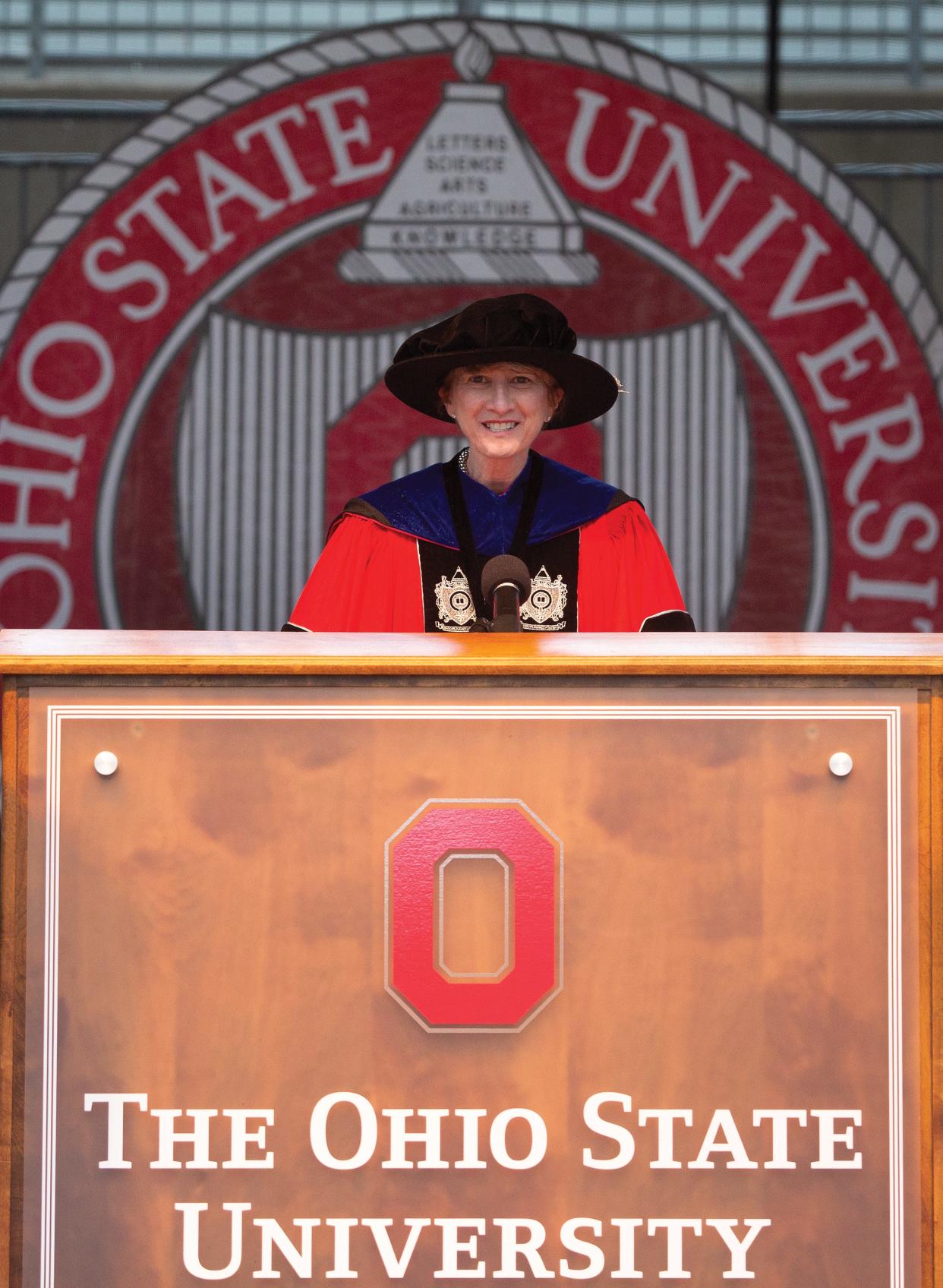Experts: Is OSU hiding something about Kristina Johnson's resignation?

- Oops!Something went wrong.Please try again later.
James H. Finkelstein is professor emeritus of public policy at George Mason University and holds both a master's degree and Ph.D. from Ohio State University. Judith Wilde is research professor of public policy in the Schar School of Policy and Government at George Mason University.
Questions and speculation continue to surround the sudden and unexpected resignation of Kristina Johnson as president of Ohio State University.
Recent articles in "Columbus Monthly" and the "Columbus Dispatch" offer a range of opinions and theories. However, both the university and Johnson have remained steadfastly silent on what led to her leaving the presidency just halfway through her term.
Letters: Lex Wexner sent 'flying monkeys' after Ohio State President Kristina Johnson
We've been studying the contracts of public university presidents for well over a decade.
We've collected approximately 300 contracts from a wide range of universities, including most of the public flagship universities and public members of the prestigious American Association of Universities.
What's in Ohio State President Kristina Johnson's contract?
Johnson's contract is, in most regards, typical of what we've seen for other major public research universities —a nearly $1 million base salary, eligibility for a substantial performance bonus, moving expenses, housing, deferred compensation, club memberships, a sabbatical, and a tenured faculty position.

She also had some unusual benefits including an annual $85,000 "fringe benefit allowance," a $50,000 "research support fund," and a somewhat complex "split dollar life insurance benefit."
Columbus Monthly:The Dazzling Rise and Stunning Fall of Ohio State University President Kristina Johnson
What could have happened if Johnson were fired?
Over the years, one of the most important trends we've noticed is the increased sophistication of termination clauses, especially those regarding termination without cause.

Johnson's contract provided two scenarios. The first was that she could receive her base salary, just more than $925,000, for one year if she left the university completely.
If she decided to stay at the university, the contract allowed her to return to the college of engineering as a tenured full professor for at least three years, with an annual salary equal to the highest-paid faculty member in the college.
After that, the dean of the college would determine her salary.
As of this past September, her annual faculty salary would have been $458,870. If she were to work for half of her remaining life expectancy, almost 16 years, without any raises and excluding the value of fringe benefits, she would receive nearly $3.7 million.
What does Johnson's contract say about resignations?
However, based on all reports in the media, Johnson was not terminated without cause.
Rather, everything we read stated that she resigned. Curiously, her contract does not include any language regarding resignation prior to the end of her term — an omission that would not be considered best practice.
More:What did expensive search net Ohio State? A 'failed presidency,' experts say
Is there an exit agreement?
We don't know if Johnson simply went off the payroll as of the effective date for her resignation or if she entered into what we have called an "exit agreement."
Exit agreements are either an amendment to the original employment contract or an entirely new agreement that define the terms of separation.
In our research, we've found that many of these exit agreements provide substantially greater remuneration than would have been provided under the original contract. At Auburn University, a former president was paid $4.5 million to leave after just 17 months of a 5-year contract.
Most often universities enter into these agreements in order to avoid potential litigation and/or to avoid prolonged negative publicity and the associated reputational harm. Like the original contracts for public university presidents, these agreements are typically public documents, although many times we, as well as journalists, have to make freedom of information requests to obtain them.
As an example, the recent trustee's agenda at Illinois State University included the terms of the president’s exit agreement.
We have no idea if there is such an agreement between Ohio State and Dr. Johnson.
But in our experience, we think there could be.
Is Ohio State hiding something?
In fact, when the Columbus Dispatch filed a freedom of information request for "Any other contracts or agreements between The University and President Johnson related to the cessation or separation of her employment from The University” the reply they received was, "To the extent any other responsive records to your request exist, they are protected from release by the attorney-client privilege and/or attorney work product."
Neither of us is an attorney. But we have considerable experience with such requests, having made hundreds of these as part of our research.
OSU's Kristina Johnson: 'I won’t apologize for pushing us all to achieve' levels deserved
We've never come across a case where an employment agreement has been protected by attorney-client privilege or considered to be an attorney work product. This response makes us wonder whether Ohio State is hiding something.
Higher education is facing a crisis of public confidence across the country.
Many no longer see a college degree as the path to financial security. Student debt has spiraled out of control. Administrative bloat is well documented. Many don't see universities as accountable and view faculty as members of the privileged elite.
Secrecy is antithetical to the values of universities where the open exchange of ideas and the sharing of knowledge have long traditions. But it may well be that the reasons for Kristina Johnson's early departure may never be known.
Even though she was likely the highest paid public chief executive in Ohio, Johnson should be entitled to privacy if her reasons for leaving were entirely personal.
However, if Ohio State is requiring Johnson to remain silent in exchange for some consideration, as is the case at Illinois State, then we believe that the public has a right to know the terms of any such agreement, even if the funds were provided by a third party on behalf of the university's interests.
For the university to refuse to confirm or deny that there is such an agreement only fuels distrust and diminishes this great university.
James H. Finkelstein is professor emeritus of public policy at George Mason University and holds both a master's degree and Ph.D. from Ohio State University.
Judith Wilde is research professor of public policy in the Schar School of Policy and Government at George Mason University.
This article originally appeared on The Columbus Dispatch: Is Ohio State hiding something about Kristina Johnson's resignation?

